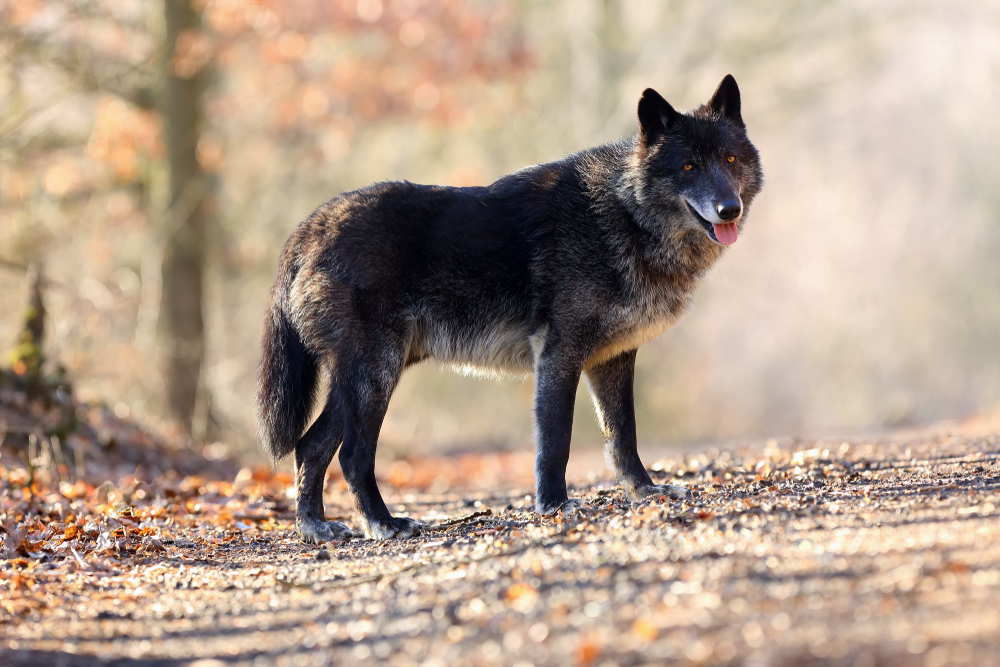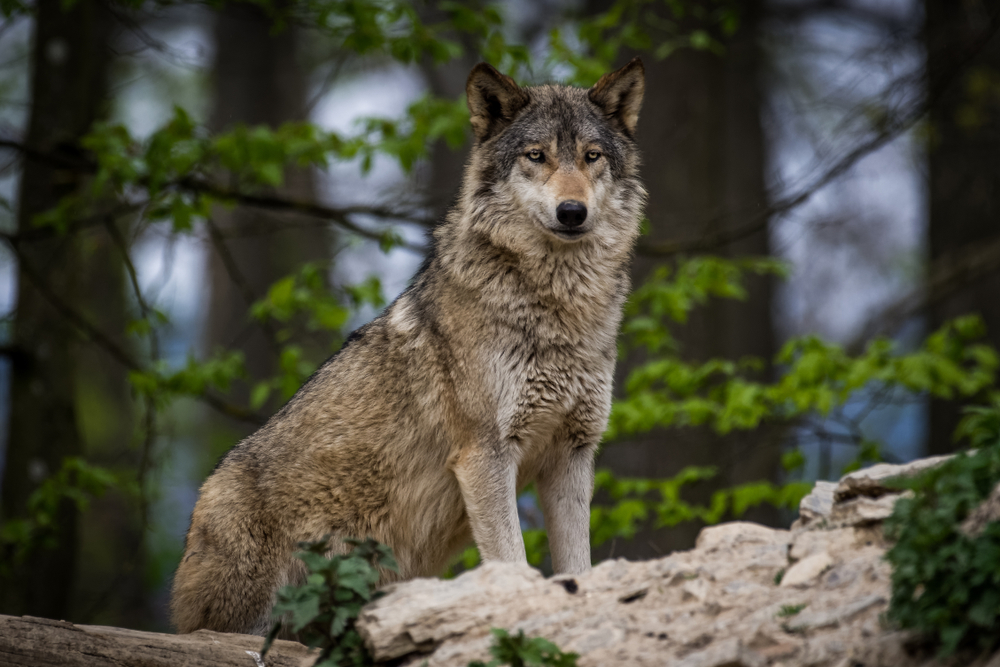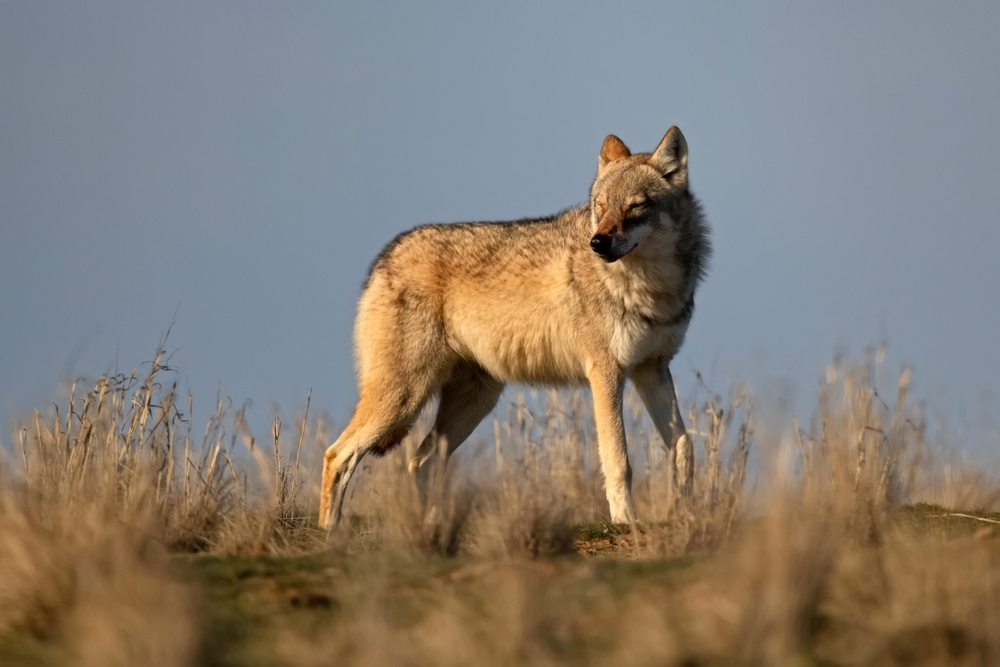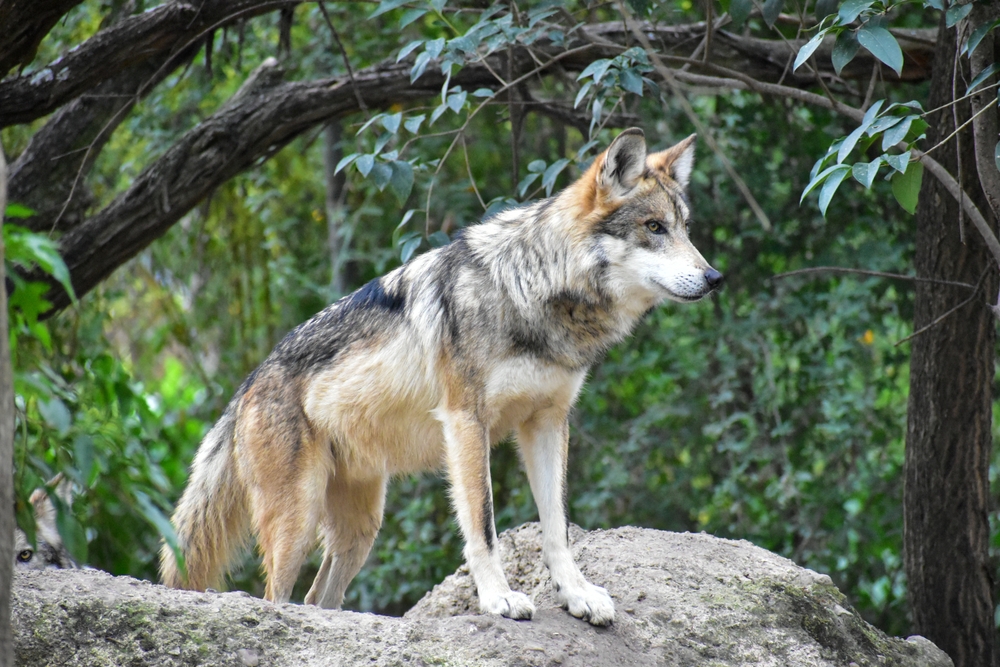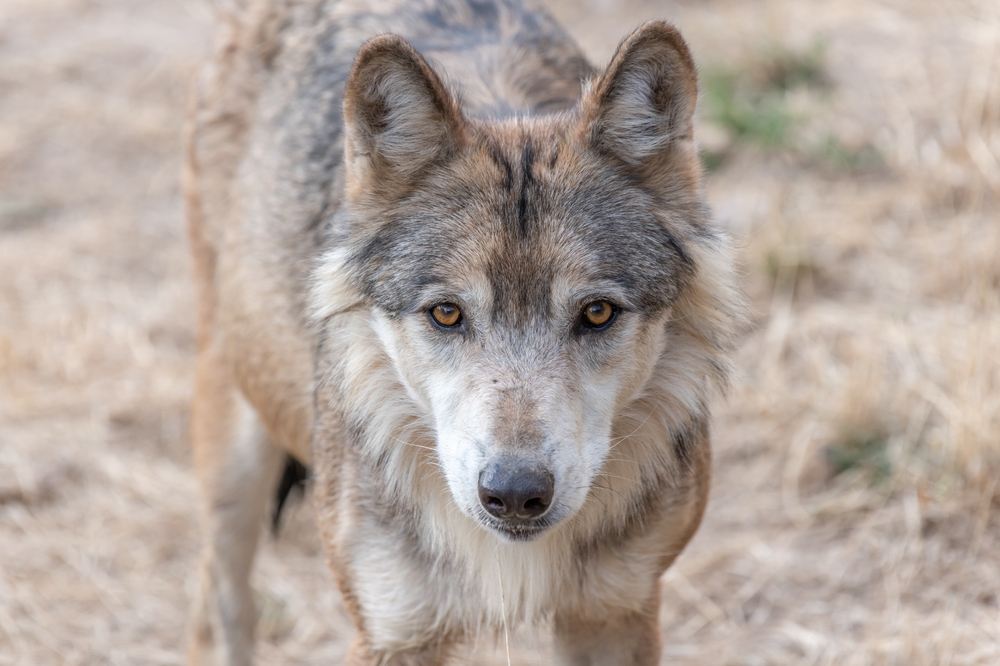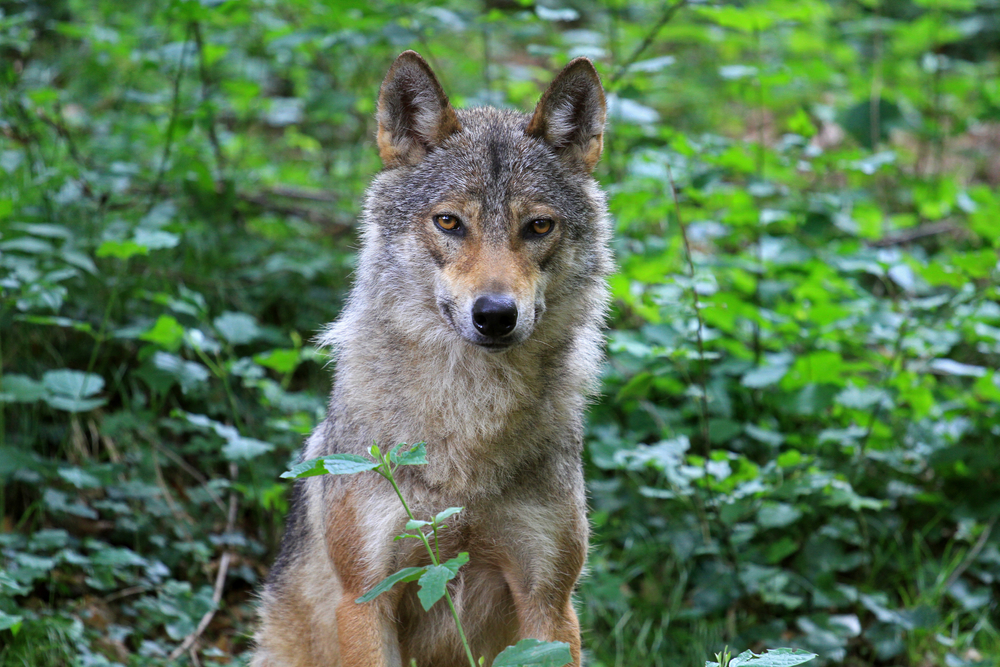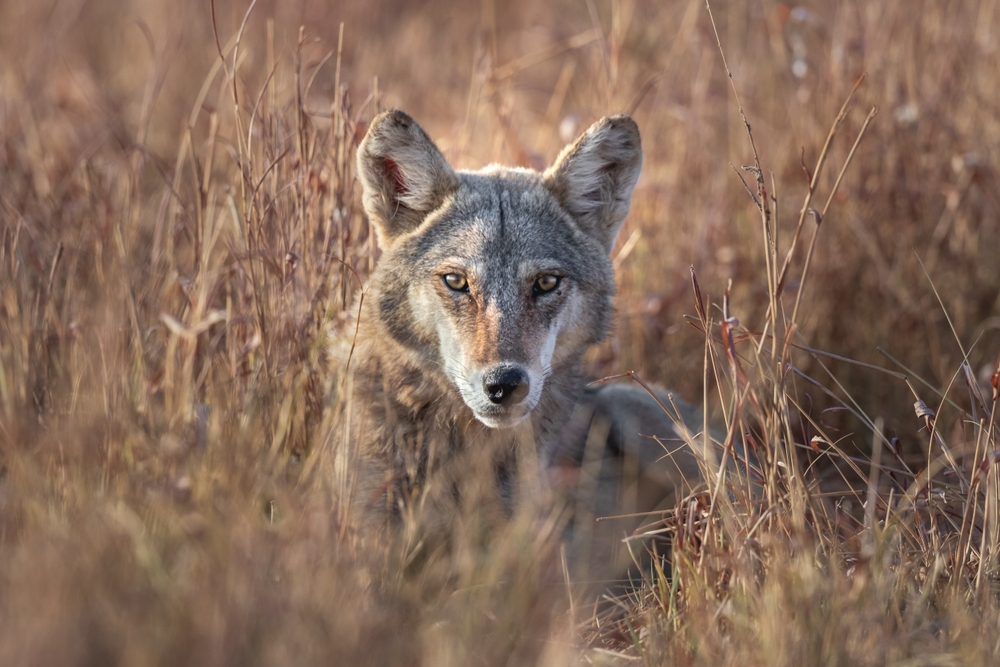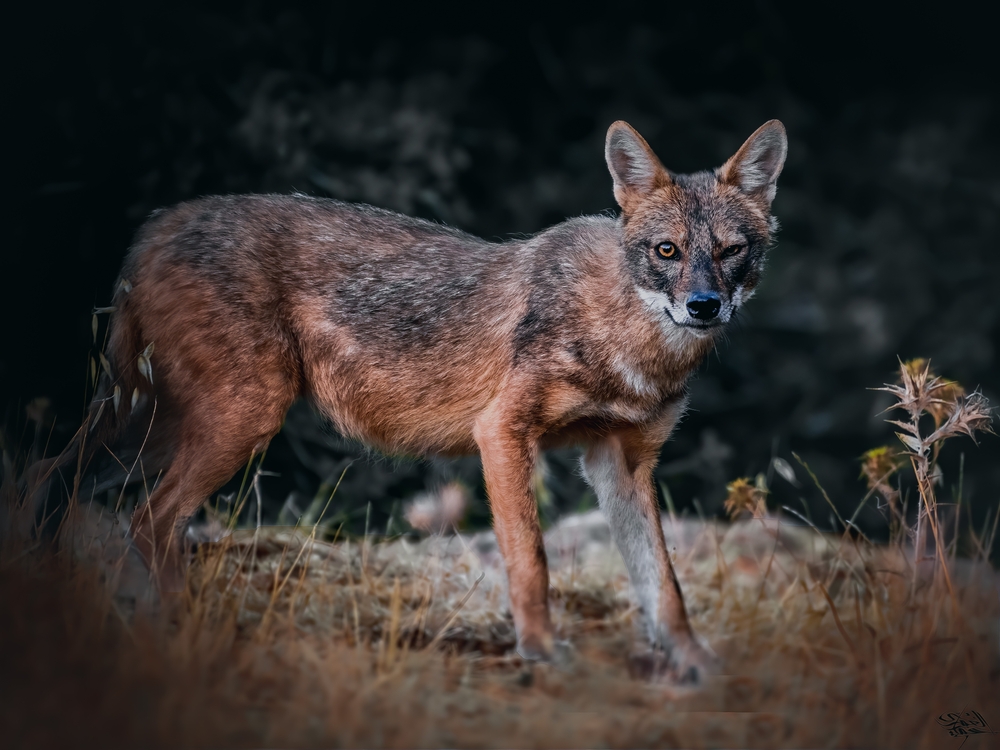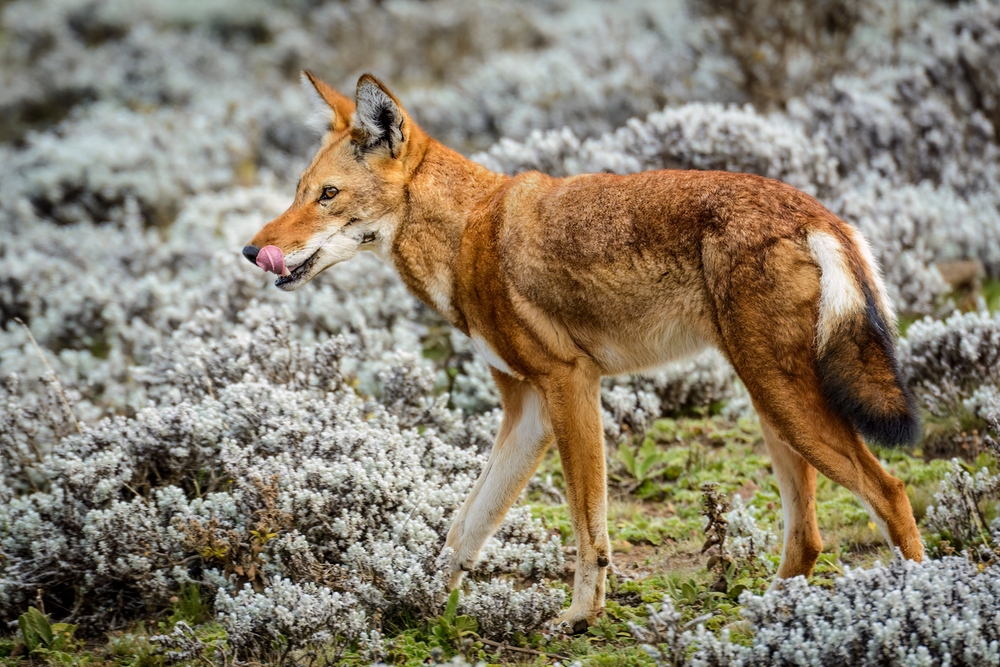The reproductive cycle of the Northwestern Wolf follows the classic gray wolf pattern but is influenced by the harsh climates and rugged landscapes of its northern habitat. Mating typically occurs once a year, and reproduction is deeply connected to the pack’s social structure.
Mating Season and Pair Bonding:
Northwestern Wolves form monogamous pair bonds, often for life. Only the alpha male and alpha female typically breed within a pack, helping regulate population and ensure pack stability.
-
Breeding Season: January to March
-
Courtship Behavior: Includes play, grooming, scent-marking, and howling; these behaviors strengthen the pair bond and synchronize reproductive cycles.
Gestation Period:
After mating, the female undergoes a gestation period of about 63 days (approximately 9 weeks).
-
Birthing Season: April to May
-
Females seek secluded dens, often dug into hillsides, beneath tree roots, or in abandoned burrows.
Litter Size and Birth:
-
Litter Size: Typically 4 to 6 pups, though litters can range from 1 to 11 pups depending on the mother’s health and prey availability.
-
Newborn Pups: Blind, deaf, and completely dependent on their mother; they weigh about 1 pound (0.45 kg) at birth.
-
The female remains in the den for the first few weeks while the rest of the pack brings her food.
Pup Development and Pack Support:
Northwestern Wolves exhibit strong cooperative breeding. The entire pack helps raise the pups.
-
Eyes Open: Around 10–14 days
-
Weaning: Begins at 4 to 5 weeks; pups begin eating regurgitated meat
-
Leaving the Den: By 6 to 8 weeks, pups start venturing out under supervision
-
Learning to Hunt: Between 3 and 6 months, pups shadow adults on hunts and develop survival skills
Dispersal and Sexual Maturity:
-
Dispersal Age: 12 to 36 months; some wolves leave to find new territory and mates, while others may remain as non-breeding helpers
-
Sexual Maturity: Typically reached at 2 years of age
-
Dispersing individuals are essential to genetic diversity and establishing new packs across wide territories
The reproductive success of the Northwestern Wolf depends on the strength of the pack, prey abundance, and territory stability. Its reproductive cycle is well adapted to seasonal rhythms and the demands of raising pups in some of the most remote and challenging ecosystems in North America.



































































